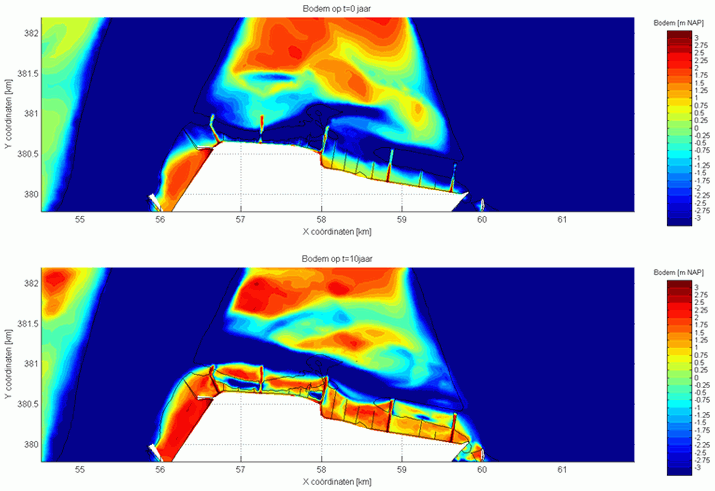Sand-mud interaction
Large scale sand-mud segregation is found in estuaries and tidal basins all over the world. Sand and mud
mixtures have been studied separately in the past because of important differences in their behaviour. Van
Ledden (2003) has developed a morphological model which accounts for both sand and mud. This model is
incorporated in the FINEL2D model. This model extends currently used morphodynamic models in a number of
ways:
- Firstly the erosion characteristics of sand and mud depend on the mud content at the bed surface.
- Secondly the temporal and spatial variations in mud content are taken into account. The bed composition varies due to erosion and deposition of sand and mud at the bed surface and mixing in the bed itself.
Example: Nature development in the Western Scheldt Estuary, The Netherlands
The Province of Zeeland is looking for ways to restore estuarine nature in the Western Scheldt. Svašek
ydraulics has investigated several locations in the estuary using the FINEL2D morphological model. Since
these locations are shallow and located near the dike both sand and silt contribute to morphological
developments. Both fractions are accounted for in the model using a sand-silt interaction module.
The model was calibrated against historical morphological developments at a location which served as role model for the other locations. A large nature development has taken place since the construction of dams in this area, because the velocities decreased and as a result sedimentation occurred. The same idea of reducing velocity and stimulating sedimentation is also used in other locations, which currently have a low nature value.

The figure above shows an example of the morphological developments calculated using FINEL2D near a location called “Osenisse”. The velocities in a small channel near the dike are reduced by constructing dams in the channel (upper figure). After 10 year the area between the dams is filled up (lower figure) with silt and the sandy channel is relocated more northwards. The areas between the dams can become valuable nature areas.
References
Ledden, M., van, 2003, Sand-mud segregation in estuaries and tidal basins, PhD Thesis, Delft University of Technology